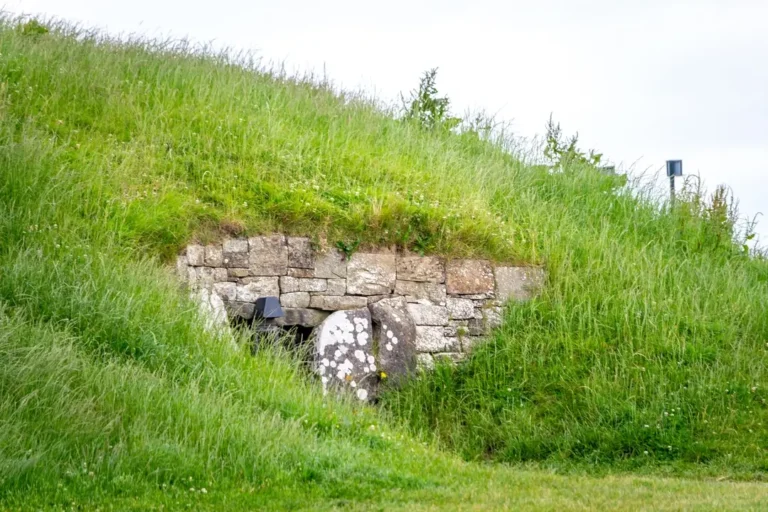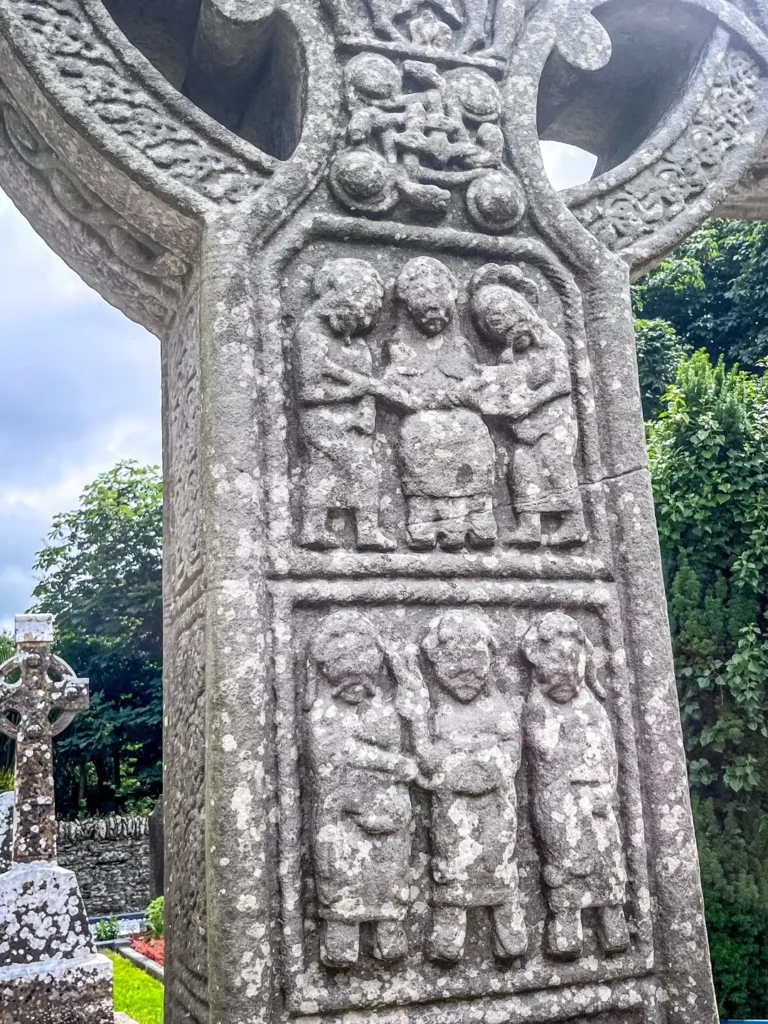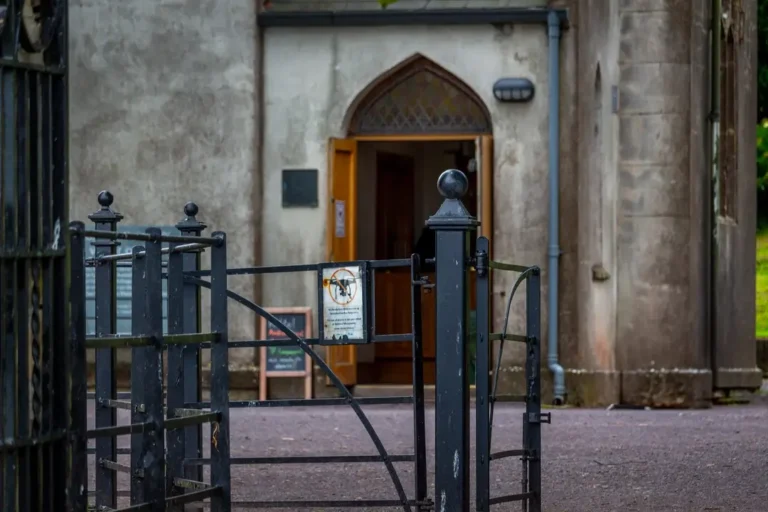Cairn T: The Equinox Chamber
Have you ever heard of Cairn T? It’s this super old place in Ireland, like 5,000 years old, and it’s pretty special. People think it was built to line up with the sun during the equinoxes, which are those two times a year when day and night are about equal length. When the sun rises on those days, a beam of light shoots right into the main room and hits a specific stone. It’s wild to think about how ancient people figured that out. This article will go into more detail about how Cairn T works and why it’s so important for understanding ancient knowledge.
Key Takeaways
- Cairn T shows off amazing ancient building skills, especially how it lines up with the sun during the equinoxes.
- The way the sunbeam lights up the backstone inside Cairn T is a big deal, pointing to old ways of tracking the sky.
- Early ideas about Cairn T, like it just being a burial spot, have changed as we learn more about its sun-tracking features.
- The design of Cairn T’s passage and chamber is key to how the sunbeam works, showing smart planning by its builders.
- Comparing Cairn T to other old sites, like Newgrange, helps us see what makes it special and what it has in common with other ancient structures.
The Significance of Cairn T Equinox
Ancient Astronomical Alignment
Cairn T, part of the Loughcrew Megalithic Centre, stands as a testament to the sophisticated astronomical knowledge of its builders. The passage and chamber are carefully aligned to capture the rising sun during the equinoxes. This alignment wasn’t accidental; it demonstrates a clear understanding of celestial movements and their importance.
Illumination of the Backstone
The most striking feature of Cairn T during the equinox is the illumination of the backstone. As the sun rises, a beam of light penetrates the passage, eventually bathing the backstone in a golden glow. This isn’t just any light; it’s a focused beam that highlights specific carvings and symbols, suggesting a deliberate effort to mark this celestial event.
Measuring Celestial Movements
The builders of Cairn T likely used the equinox illumination to track and measure celestial movements. The way the light interacts with the carvings on the backstone could have served as a calendar, helping them to predict seasonal changes and plan agricultural activities. This connection between the monument and the sky highlights its role as an ancient astronomical observatory.
Here’s a simple table illustrating the approximate dates of the equinoxes:
| Equinox | Approximate Date |
|---|---|
| Spring Equinox | March 20th/21st |
| Autumn Equinox | September 22nd/23rd |
And here are some reasons why this alignment was important:
- Marking the change of seasons.
- Predicting planting and harvesting times.
- Religious or spiritual significance.
Observing the Equinox Phenomenon
Early Morning Gatherings
Getting to Cairn T for the equinox sunrise means an early start. People gather well before dawn, often in the dark and sometimes in pretty cold weather. There’s a real sense of anticipation as everyone waits for the sun to peek over the horizon. It’s not unusual to see a mix of people – locals, tourists, and those with a deep interest in ancient astronomical sites. The atmosphere is usually quiet and respectful, with everyone hoping for clear skies.
Weather Conditions and Visibility
Of course, the weather plays a huge role in whether you actually see anything. Fog, clouds, and rain can all obscure the sunrise. Some years, people have gathered only to be disappointed by complete cloud cover. But when the skies are clear, the experience is amazing. The sunbeam entering the chamber is a sight to behold. Even if the weather isn’t perfect, there’s still something special about being there, connecting with a tradition that’s thousands of years old.
Documenting the Sunbeam
People document the equinox phenomenon in various ways. Some take photos and videos, trying to capture the moment the sunbeam hits the backstone. Others sketch or write down their observations. There have been efforts to create detailed records of the illumination patterns over the years, noting the exact time the light enters the chamber and how it moves across the stones. This documentation helps researchers understand the monument’s alignment and its significance to the people who built it.
It’s interesting to see how technology has changed the way people record the event. In the past, it was all about careful drawings and written notes. Now, everyone has a camera in their pocket, and the internet is full of images and videos of the Cairn T equinox. It makes the experience more accessible, but it also raises questions about how we preserve the integrity of the site.
Here’s a simple table showing the number of clear equinox sunrises observed over a few years:
| Year | Spring Equinox | Autumn Equinox |
|---|---|---|
| 2021 | Yes | No |
| 2022 | No | Yes |
| 2023 | Yes | Yes |
| 2024 | No | No |
Here are some common methods used to document the sunbeam:
- Photography (still and time-lapse)
- Videography
- Detailed sketching
- Written observations (time, position, intensity)
- Digital mapping of the light’s path
Historical Context of Cairn T
Early Descriptions and Interpretations
The Cairns at Loughcrew, including Cairn T, were first documented by Conwell in the 19th century, specifically in his book The Tomb of Ollamh Fodhla. However, a paper about the Loughcrew cairns was presented to the Architectural Society of Oxford a few years before Conwell’s publication. The earliest known reference to the site appears on a map created in 1798 for the landowner.
- Conwell initially believed Cairn T was a simple burial mound.
- This interpretation persisted for quite some time.
- Later interpretations suggested a more complex purpose.
Early visitors often described the site as a haphazard collection of stones, unaware of the intricate designs and astronomical alignments hidden within.
Conwell’s Burial Mound Theory
Conwell’s initial assessment of Cairn T as a burial mound significantly shaped early understanding of the site. His theory, while influential, didn’t fully account for the unique features and potential astronomical significance of the cairn. The idea that it was just a simple burial site didn’t quite sit right with everyone, especially as more detailed surveys and observations came to light.
Alternative Astronomical Views
Martin Brennan proposed an alternative view, suggesting that many cairns across Ireland were designed to measure the movements of the sun and other celestial bodies. Brennan’s work, particularly his book The stars and the stones, offered a fresh perspective, though some considered his interpretations to be somewhat speculative. While Brennan’s ideas were intriguing, some aspects, such as the exact pattern of light during the Equinox, needed further investigation. This led to more focused research on the Equinoxes and the potential for Cairn T to function as an ancient astronomical tool.
| Researcher | Theory | Evidence
The Mechanics of Illumination
Passage and Chamber Design
The design of Cairn T plays a huge role in how the equinox illumination works. The passage isn’t just a tunnel; it’s carefully angled and shaped to catch the sunlight at a specific time of year. The central chamber then acts as a screen, displaying the sunbeam in a way that highlights certain features. The precision in the passage alignment is what makes the whole thing possible.
Role of Specific Stones
Certain stones within Cairn T are more important than others when it comes to the illumination. Orthostat L3, for example, helps define the left margin of the light beam. The roof stone supported by L3 and the sillstone of the end chamber also play a part in shaping the light. It’s like they’re all working together to create a specific effect. The back stone is the canvas, and these other stones are the brushes.
The Equinox Symbol
There’s a symbol on the back stone of Cairn T that seems to be directly related to the equinox illumination. It’s an eight-branch symbol, and during the equinox, the beam of light focuses right on it. It’s hard to say for sure what it means, but it’s clearly important. It could be a marker, a calendar, or something else entirely. It’s one of the things that makes Cairn, like other rules-lite RPGs, so interesting.
The way the light interacts with the symbol suggests that the builders of Cairn T had a very good understanding of astronomy and geometry. They weren’t just piling up rocks; they were creating a complex system that marked time and maybe even had some spiritual significance.
Research and Restoration Efforts
Initial Investigations and Discoveries
Early accounts of Cairn T, like those in Conwell’s book, sparked initial interest, but interpretations varied. Some saw it as a simple burial site, while others, like Martin Brennan, proposed it was a tool for measuring celestial movements. One early investigator wasn’t convinced by existing theories and decided to conduct his own observations around the equinoxes. He got access to the site and began documenting the sunrise. These early investigations revealed that modern additions, like the gate, were interfering with the sunlight’s path.
Addressing Structural Interferences
After documenting the interference caused by the gate and its supports, steps were taken to rectify the situation. The supporting stone, deemed not original to the structure, was removed, and a new gate was installed. This was a crucial step in attempting to restore the original alignment of the cairn. A survey was also conducted to understand how the sunrise position varies throughout the year, taking into account the earth’s tilt.
Collaboration with Public Works
Collaboration with the Office of Public Works (OPW) proved essential for facilitating research and implementing changes. The OPW provided access to the site and supported the removal of obstructive elements. This collaborative approach highlights the importance of combining archaeological knowledge with practical action to preserve and understand ancient sites. The investigator worked with Tom FitzGerald at the Office of Public Works, who provided a key to the site for the duration of the study.
The investigator covered a hole in the capstone with his coat to block the light. This was done to see how the chamber would look without the hole letting light in. The hole was letting rain into the chamber, which was causing dampness.
Observations revealed two key differences from Conwell’s time:
- A sillstone was missing from the passage.
- The back stone in the end chamber had recent damage.
- Loose stones were scattered on the ground.
Comparing Cairn T with Other Sites
Similarities with Newgrange
When you start looking at Cairn T, it’s hard not to think about Newgrange. Both are passage tombs, and both show evidence of being aligned with the sun. The most striking similarity is the way sunlight is used to illuminate the inner chambers during specific times of the year. At Newgrange, it’s the winter solstice, while at Cairn T, it’s the equinoxes. Both sites also have intricate stone carvings, though the styles and specific symbols differ. You can see the ancient monuments share some common ground in their design and purpose.
Differences in Scale and Features
While they share similarities, there are key differences. Newgrange is much larger and more elaborate than Cairn T. The scale of Newgrange is just impressive, and it has a more complex structure. Cairn T, on the other hand, is smaller and has a simpler design. Also, Newgrange has that famous roofbox that lets sunlight in, while Cairn T relies on a different kind of passage design to capture the sun’s rays. The carvings at Newgrange are also more extensive and detailed. Here’s a quick comparison:
| Feature | Newgrange | Cairn T |
|---|---|---|
| Size | Larger | Smaller |
| Complexity | More Complex | Simpler |
| Illumination | Winter Solstice | Equinoxes |
| Carvings | More Extensive | Less Extensive |
Unique Aspects of Cairn T
Cairn T has some unique features that set it apart. One of the most interesting is the backstone in the chamber, which is illuminated by the sun during the equinoxes. The way the light interacts with the carvings on this stone is pretty special. It seems like the builders of Cairn T were really focused on capturing the Equinoxes and using the sunlight to mark a specific time of year. Plus, the four-year cycle theory, which suggests that Cairn T was used to define a calendar system, is something that isn’t as strongly associated with other sites like Newgrange.
It’s important to remember that while we can compare these sites, each one has its own story to tell. The people who built these monuments had their own reasons and their own ways of doing things. Understanding the similarities and differences helps us appreciate the complexity of their knowledge and beliefs.
The Four-Year Cycle Theory
Illumination Patterns and Symbols
At Cairn T, the way sunlight interacts with the symbols inside the chamber isn’t just a one-off event. It seems to follow a pattern. Specifically, the illumination of the equinox symbol on the backstone changes in a predictable way over a four-year period. This observation came from studying how the beam of light shifted and interacted with other symbols around the main equinox symbol. There are other symbols, two on the left and one above the equinox symbol itself that could be used to measure the daily change of the top of the beam of light. The equinox symbol was outlined precisely on the days close to the equinox.
Defining a Calendar System
If the illumination patterns change predictably over four years, it suggests that the builders of Cairn T might have used it to track time. It’s like having a built-in calendar! The changing patterns of light could have marked the passage of seasons or even been used to predict important agricultural events. This is a fascinating idea because it implies a sophisticated understanding of ancient astronomical alignment and the ability to record time in a meaningful way.
Implications for Ancient Knowledge
If Cairn T was indeed used to define a four-year cycle, what does that tell us about the people who built it? It suggests they possessed a deep understanding of astronomy and mathematics. They weren’t just stacking stones; they were encoding knowledge into the structure itself. This knowledge could have been passed down through generations, making Cairn T a repository of important cultural and scientific information. The study of the Loughcrew Equinox is very similar but on a much smaller and more intimate scale.
The possibility that Cairn T could define a four-year cycle based on the changing patterns of illumination of the symbols on the back stone is a compelling idea. It opens up new avenues for understanding the knowledge and capabilities of the people who built this ancient monument.
Here are some questions that arise from this theory:
- What other symbols within the chamber might have been used to track time?
- How accurate would this four-year calendar have been?
- Did other similar sites also incorporate such cyclical observations?
Ever wonder why some things seem to happen every four years? It’s like a pattern, right? We call this the ‘Four-Year Cycle Idea.’ It’s a cool way to look at how things change over time. Want to learn more about these interesting patterns and how they might affect you? Head over to our website to dig deeper!
Conclusion
So, that’s Cairn T for you. It’s more than just old rocks; it’s a place where ancient people really knew their stuff about the sun. The way the light hits those stones during the equinox is pretty cool, and it makes you think about how much effort they put into building it. It’s a reminder that even thousands of years ago, people were looking up at the sky and figuring things out. It’s a neat spot to visit, and it definitely leaves you with something to think about.
Frequently Asked Questions
What exactly is Cairn T?
Cairn T is an ancient stone structure, over 5,000 years old, located in Loughcrew, Ireland. It’s famous because during the equinoxes (in March and September), the rising sun shines a beam of light directly into its main chamber, lighting up a special carved stone at the back.
What part of Cairn T gets lit up by the sun?
The sunbeam lights up a carved stone, often called the ‘backstone,’ deep inside the chamber. This stone has unique symbols on it, which become clearly visible when the light hits them.
Why is the equinox important for Cairn T?
The equinoxes are special days in spring and autumn when day and night are about equal in length. At Cairn T, the sun aligns perfectly with the entrance on these days, allowing the light to travel all the way into the chamber.
How do people experience the equinox event at Cairn T?
People gather early in the morning around the equinox dates. They wait for the sun to rise and watch as the beam of light slowly moves into the chamber, creating a stunning visual display.
How is Cairn T different from Newgrange?
While both are ancient Irish sites with sun alignments, Cairn T is smaller and offers a more personal experience. Newgrange is much larger, with a longer passage, and its main alignment is during the winter solstice, not the equinox.
What is the ‘four-year cycle theory’ about Cairn T?
Some researchers believe the symbols and the way the light moves across them could have helped ancient people keep track of time, possibly even marking a four-year calendar cycle.





